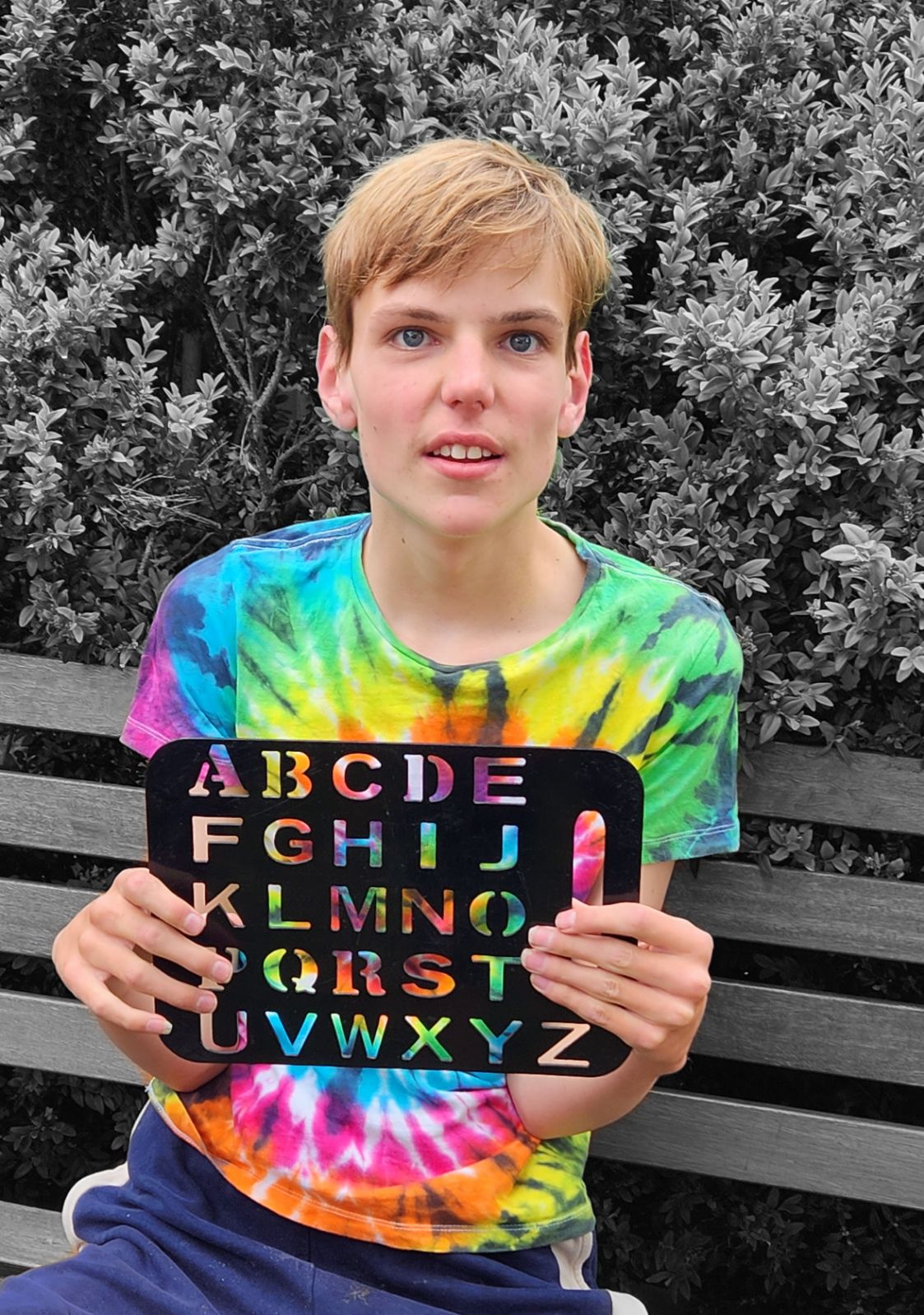
Spelled by Patrick Saunders
This made me feel less than others and lonely and I wanted it to end and start again at another school.
I am intelligent and have a brain that has a mind of its own. My brain does not always do what I want it to do and it makes my choices appear wrong.
I remember when a teacher yelled at me because I could not answer the question via a PECS card. It made me feel stressed and upset. I was six years old and it happened all the time. My advice to teachers would be to be nice and patient to your students and allow mistakes and more time.
I stopped talking almost altogether when I was about nine years old. I still have a few spoken words but they are difficult to pronounce. I rarely talk.
I learnt to read when I was three years old. I learnt to read even though I couldn’t talk because my mum and dad read a lot of books to me and I remembered the words.
As I got older I watched TV with subtitles and learnt harder words and also learnt to read by observing things around my environment and taking notice of everything.
I started to use a letterboard when I was seven. I found my voice through the letterboard when I was 12 years old. My mum and dad started Rapid Prompting Method and then Spelling 2 Communicate as other therapies were not helping.
Spelling is difficult for me as I don’t always have access to a letterboard.
I have motor planning differences which prevent me from picking up the letterboard by myself and pointing at letters and numbers. I currently spell one hundred words per hour.
I require a communication and regulation partner to help me voice my thoughts. They help me regulate by supporting the letterboard. They support the letterboard to aid my physical limitations and to help my motor planning. They change letterboard colours and stencils as it provides more stimulation and gets me back on track. My favourite letterboard colour is green because it is easy to see and it makes spelling easier.
The letterboard is not placed on the table because I need help with my hands. They have a mind of their own. If it was placed flat on the table my finger would point at the wrong letters because I need the letterboard up high to accommodate my needs.
I use the term ‘spell’ instead of ‘say’ because I don’t talk to communicate. I also use the term ‘spell’ instead of ‘write’ as I can’t hold a pen in my hand.
When I pick up a pen in my hand I dysregulate. I turn the pen in my fingers because it makes me feel regulated and calm.
See below how Patrick uses a letterboard to communicate.
1. I wish people would stop talking about me like I’m not in the room.
2. Never stop reading to non-speakers because we don’t stop learning just because we don’t talk.
3. Always put the subtitles on the TV.
4. Please immerse your child or student in language.
5. Change stories and don’t keep reading the same book again and again.
6. Never stop believing in a non-speaking person.
7. Always presume they know what you are teaching or talking about.
8. Try to be kind and patient.
9. Help non-speakers to regulate when they are having difficulties with their emotions.
10. Provide more opportunities to communicate using a letterboard.
11. Parents must never stop advocating for their non-speaking child. When their child gets better at using a letterboard they can advocate for themselves.
12. Stimming can impact my spelling as I get distracted but it can also help me focus. Get to know the speller and support their needs at the time and accommodate them.
Want to find out more about spelling as communication? Visit the International Association for Spelling as Communication (I-ASC) website.
ABOUT ME
My name is Patrick Saunders and I’m a non-speaker who communicates with a letterboard. I am Autistic and I love to spell, bushwalk, listen to and watch music, swim and move. I am 14 years old. You might remember me from when I cycled a bicycle across America with my mum and dad and from the ABC podcast The Parenting Spectrum. This is my very first blog and I hope you like it.
If you would like to contact me or collaborate on something please head to my website thestoryspeller.com

The Reframing Autism team would like to acknowledge the Traditional Owners of the lands on which we have the privilege to learn, work, and grow. Whilst we gather on many different parts of this Country, the RA team walk on the land of the Awabakal, Birpai, Whadjak, and Wiradjuri peoples.
We are committed to honouring the rich culture of the Aboriginal and Torres Strait Islander peoples of this Country, and the diversity and learning opportunities with which they provide us. We extend our gratitude and respect to all Aboriginal and Torres Strait Islander peoples, and to all Elders past and present, for their wisdom, their resilience, and for helping this Country to heal.